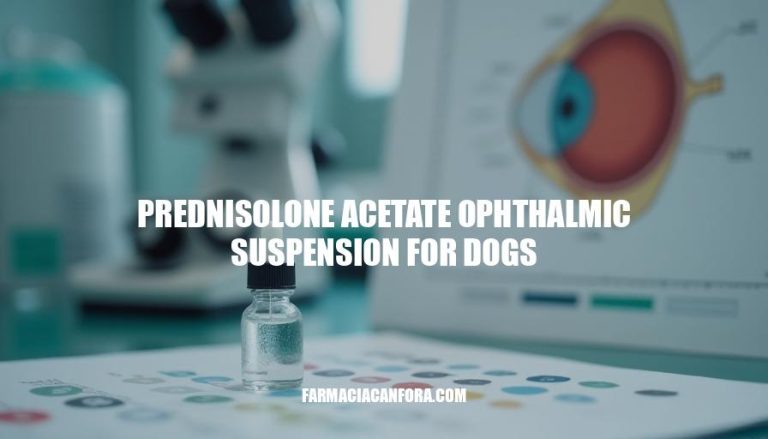


Prednisolone acetate is a medicine for dogs with eye problems. It helps reduce swelling and inflammation in their eyes. This makes it easier for them to feel better when they have conditions like conjunctivitis or keratitis.
Prednisolone acetate ophthalmic suspension is a corticosteroid used to treat inflammation in the eyes of dogs. The medication works by inhibiting the inflammatory response through several mechanisms. It reduces edema (swelling), leukocyte migration (movement of white blood cells), fibrin deposition (clot formation), capillary proliferation and dilation (growth and widening of small blood vessels), collagen deposition, and scar formation.
These actions help to decrease inflammation and relieve symptoms such as redness, swelling, and pain in the eyes.
For proper administration, dog owners should follow these guidelines:
Preparation: Shake the bottle well before each use.
Application: Instill 1 to 2 drops into the conjunctival sac (the space between the eyelid and the eyeball) of the affected eye(s) 2 to 4 times daily.
Monitoring: If signs and symptoms fail to improve after 2 days, re-evaluate the condition. Do not discontinue therapy prematurely.
Tapering: Gradually reduce the dosage frequency when treating chronic conditions to avoid withdrawal symptoms.
It is important to follow the veterinarian’s instructions regarding dosage and duration of treatment. Prednisolone acetate should not be used in the presence of corneal ulceration or untreated ocular infections.
Dog owners should also be aware of potential side effects, such as increased intraocular pressure (glaucoma), cataract formation, and suppression of the immune response, which can increase the risk of secondary infections.
By adhering to these guidelines, dog owners can help ensure the effective and safe use of prednisolone acetate ophthalmic suspension for their pets.
Prednisolone acetate ophthalmic suspension is an effective treatment for dogs with eye problems, offering several benefits in managing conditions such as conjunctivitis and keratitis.
It is crucial to follow a veterinarian’s instructions regarding dosage and duration of treatment, as well as to be aware of potential side effects and precautions.